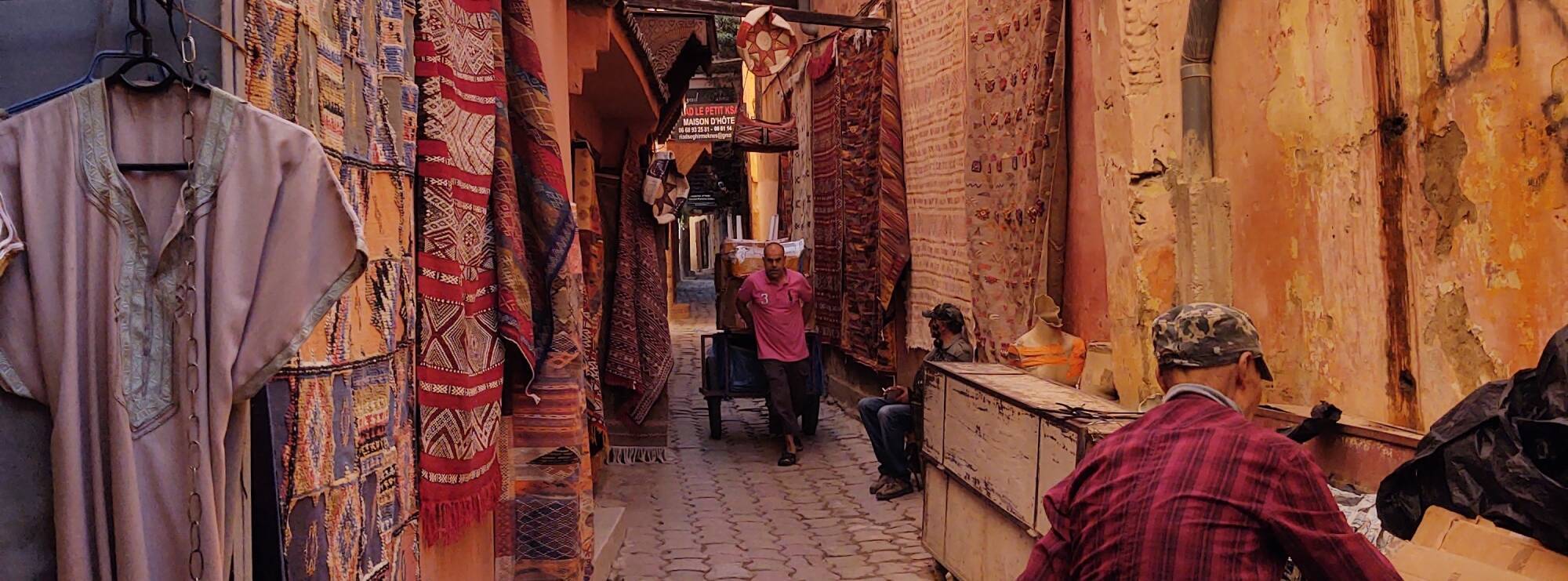
Finding my Lodging in the Medina
Into the Medina
I had just arrived on a train from Tangier and now I had to find where I was staying. I took a petit taxi from the train station to Place el-Hedim, a large open square within the walled old city. From there I would walk into the medina.
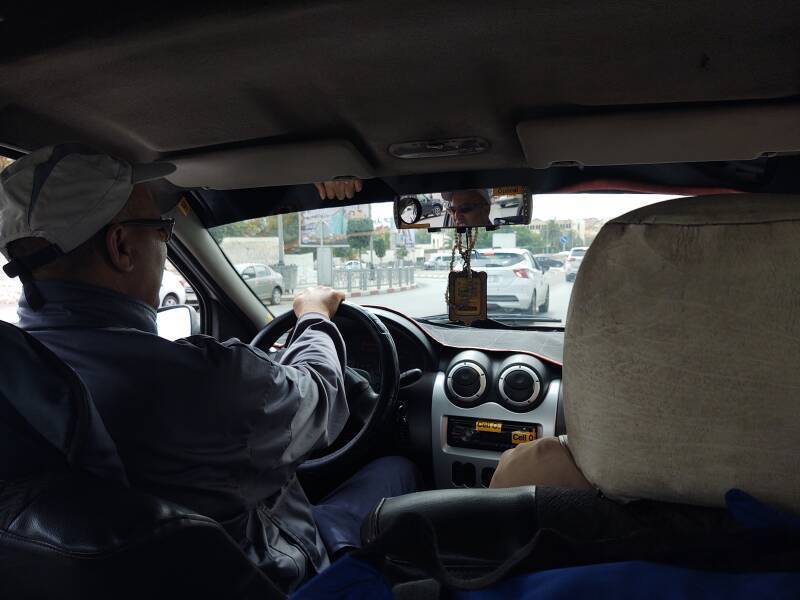
The Sultan Moulay Isma'il ibn Sharīf ruled Morocco for 55 years, from 1672 to his death in 1727, the longest rule of any Sultan of Morocco. He made Meknès his capital, and undertook huge building projects in the city. It's estimated that from 25,000 to 55,000 laborers were needed for the projects. They were a mix of paid workers and slaves.
Legends are still repeated today about the Sultan owning several tens of thousands of Christian slaves, keeping them in huge underground dungeons when they weren't working on demolition and construction projects.
The reality was that there were a few thousand Christian slaves at most. The "dungeons" were storage facilities for grain and other supplies. The exaggerated legends came from the reports sent back by European ambassadors who had gone to Meknès to negotiate for the release of their citizens.
El-Hedim means "The Rubble", referring to the huge pile of debris collected here when an earlier part of the Kasbah was demolished. Here's the view from the street. The first stage was to walk all the way across Place el-Hedim to the medina wall at its north end.
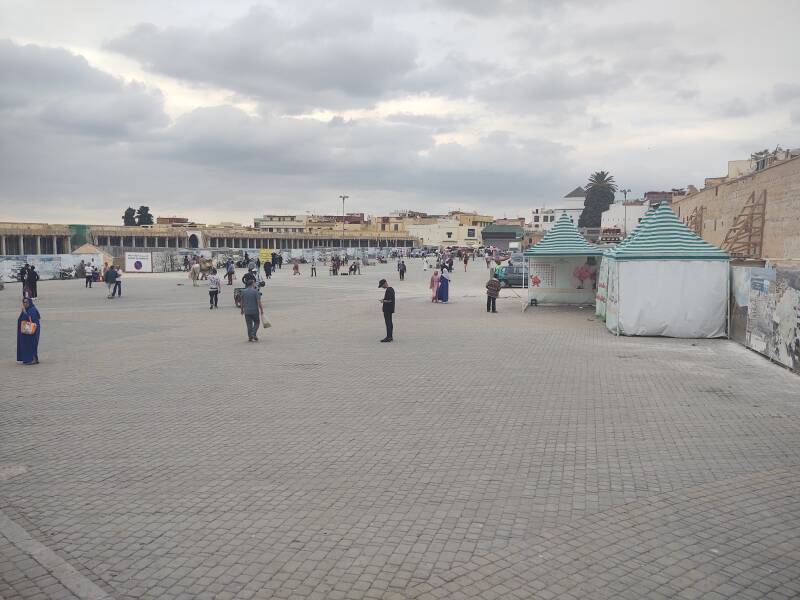
Dar Jama'i houses a great museum that I would visit later. Its entrance is at right here. The gateway into the medina is just to the left of the similarly shaped gateway into the museum. It's largely hidden by the tables and umbrellas of the shoe salesmen.
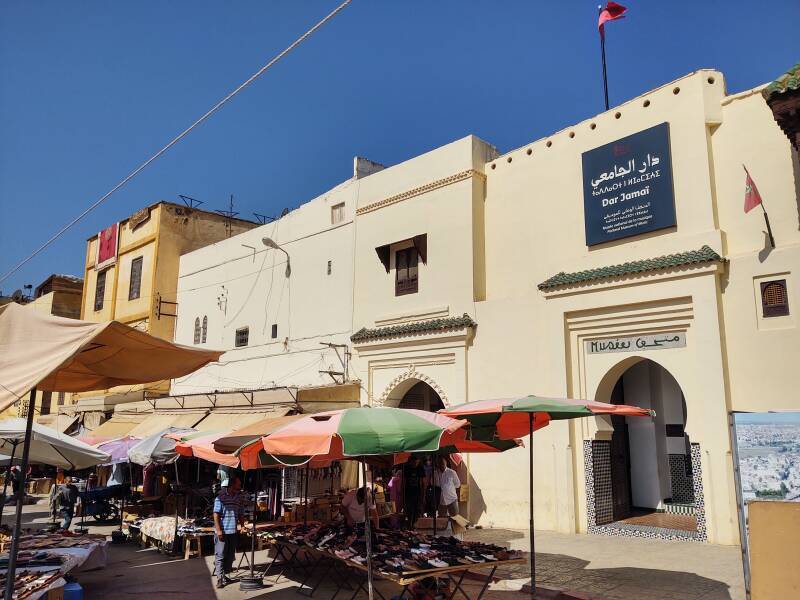
Here's the same area in the early evening, when the umbrellas are down and the gateway into the medina is easier to spot.
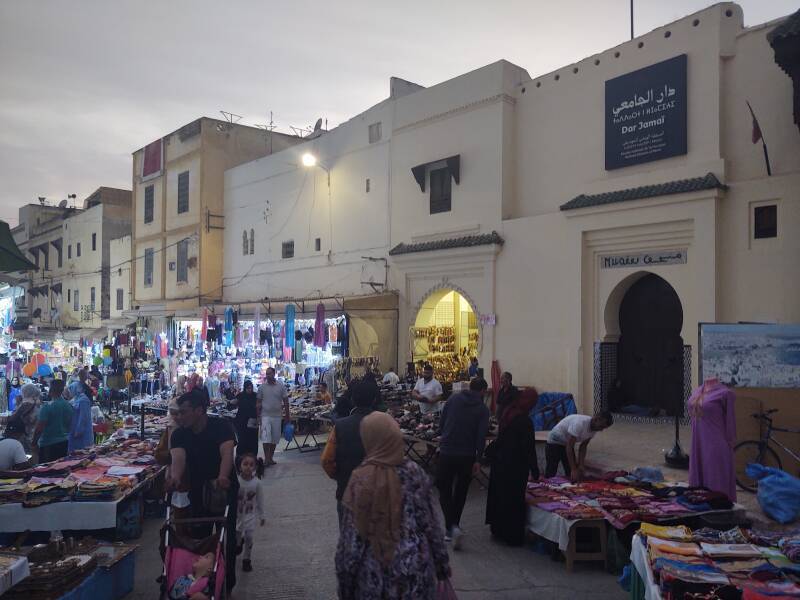
First you go back this lane for about sixty meters. Shoes and all sorts of clothing are on display.
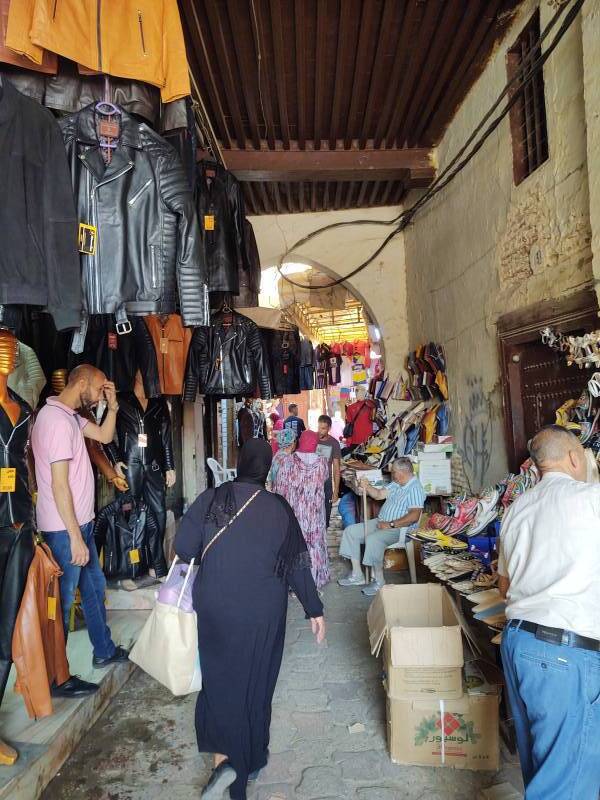
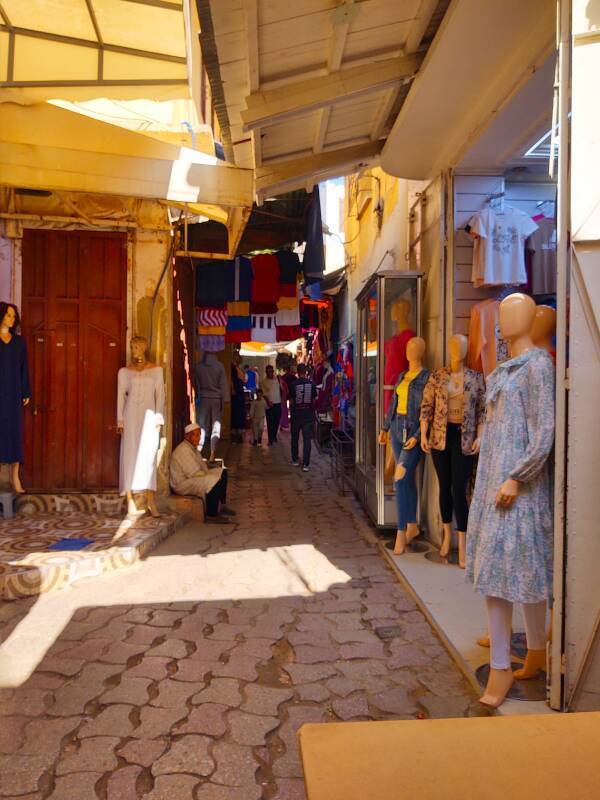
Turn right at the tee.
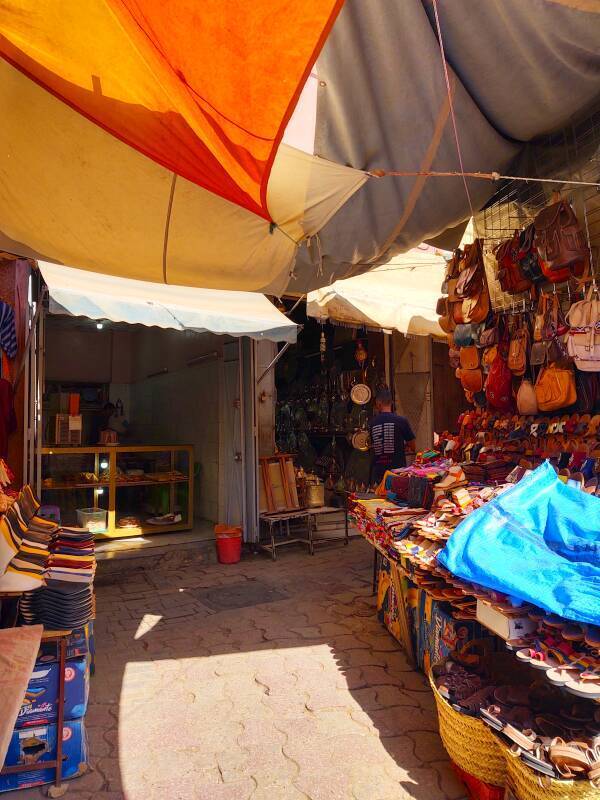
Continue for about a hundred meters on this prominent lane through the medina.
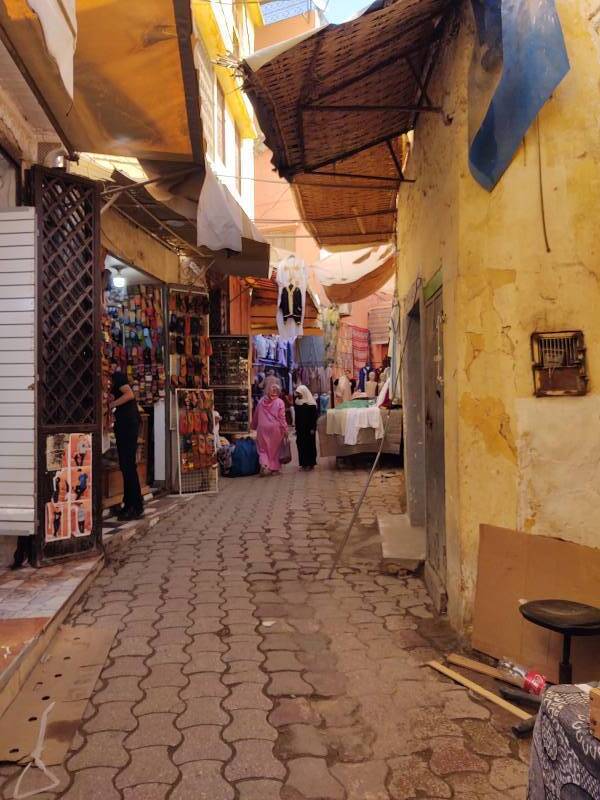
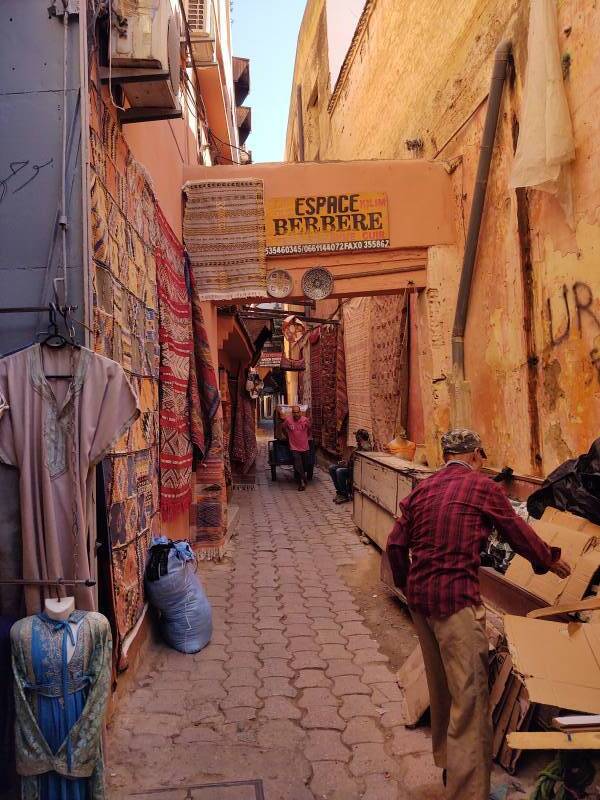
Step to the side as needed because people are delivering goods, working on furniture, setting up sales displays, and otherwise keeping the passageway busy.
There are some riads or ryads now operating as guesthouses. A riad is a sturdy structure built around a central courtyard. Mine is one of them, a little further along.
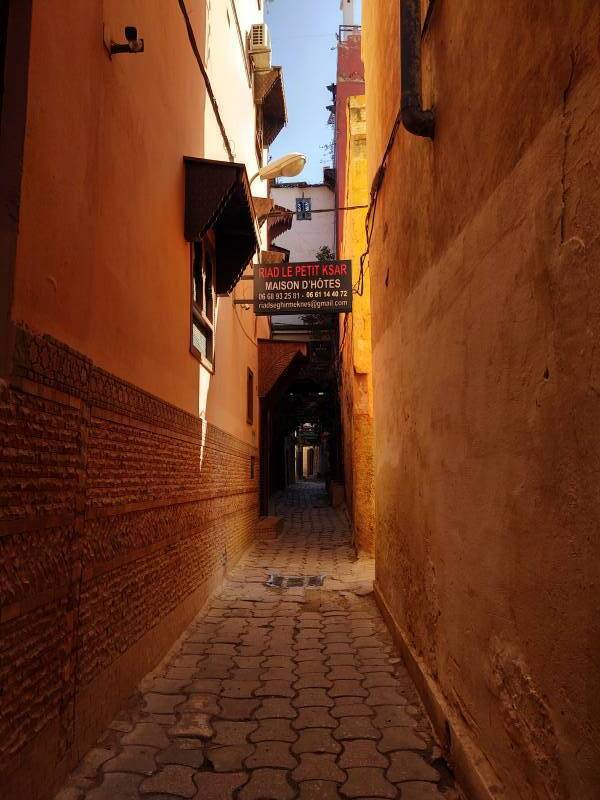

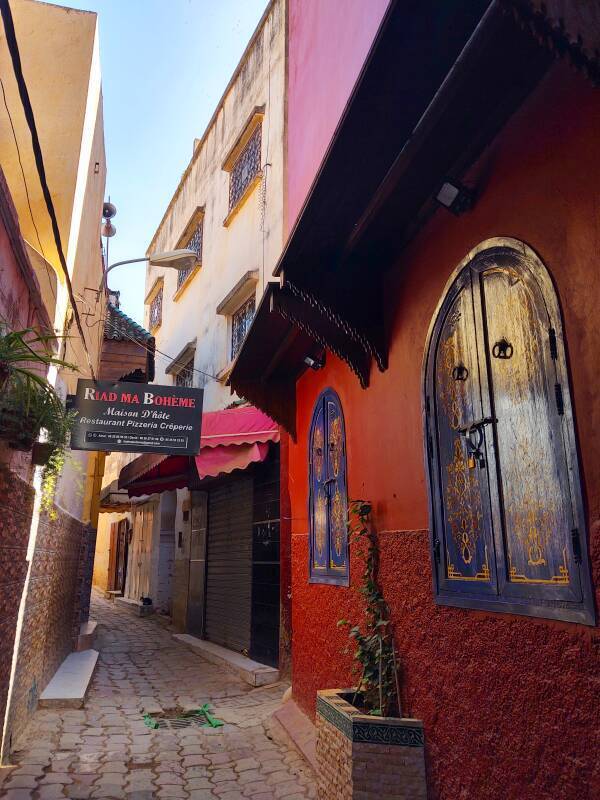
Above is the sign for mine, Riad Ma Bohème. Opposite that sign a small passageway leads off to the right of the lane that I'm on.
The guesthouse is on the left side of this passage, about fifteen meters off the main lane.
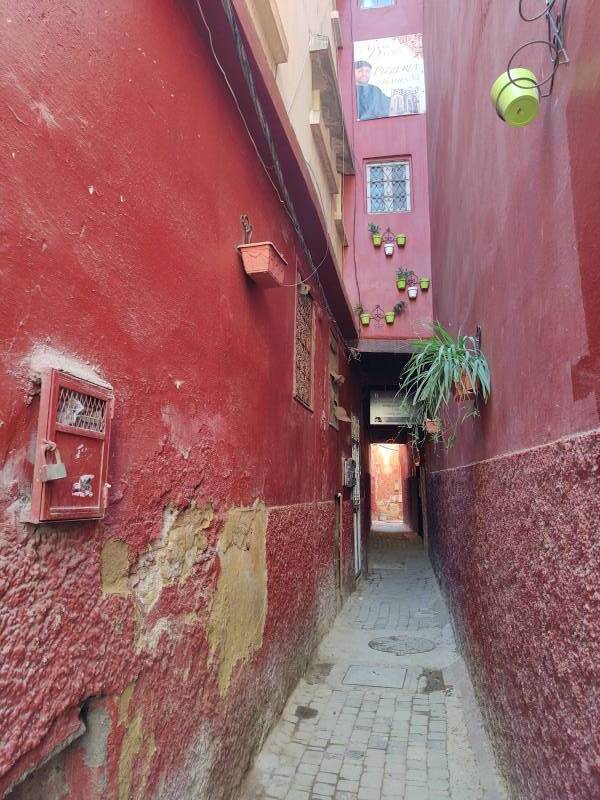
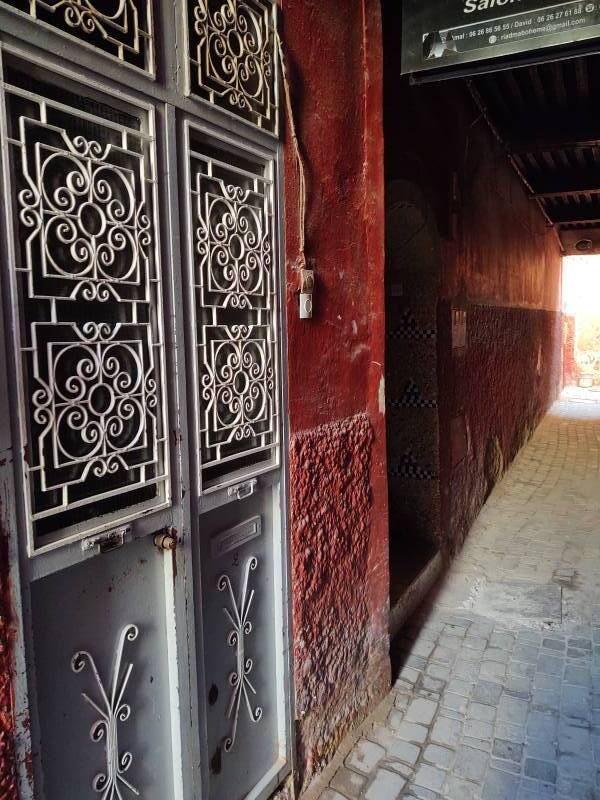
But which of the two heavy unmarked doors is it?
The address I had was "4 Derb Sekkaya Tiberbarine". A derb is a small side lane, often like a narrow hallway. Like this one.
The electrical meters told me where door #4 was in derb Sekkaya Tiberbarine.
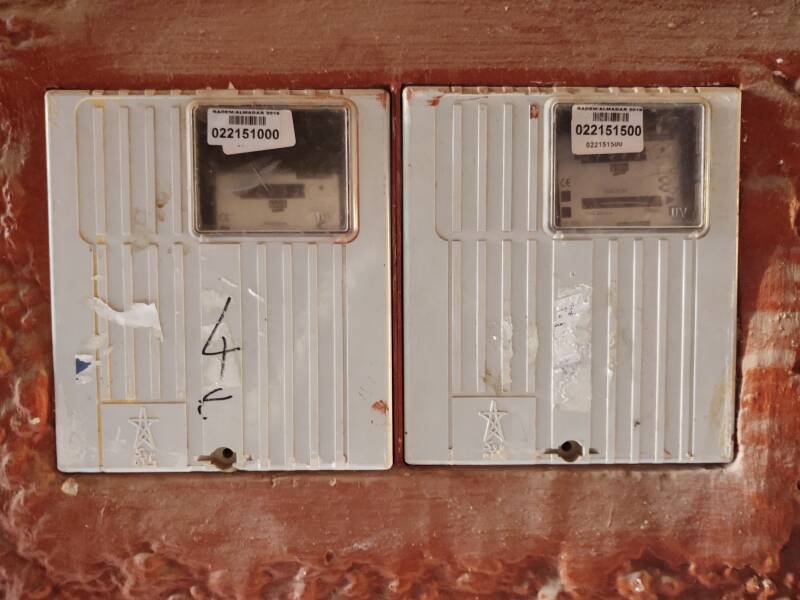
It's the one with the wooden face. The doorbell switch is, as usual, near the top of the door.
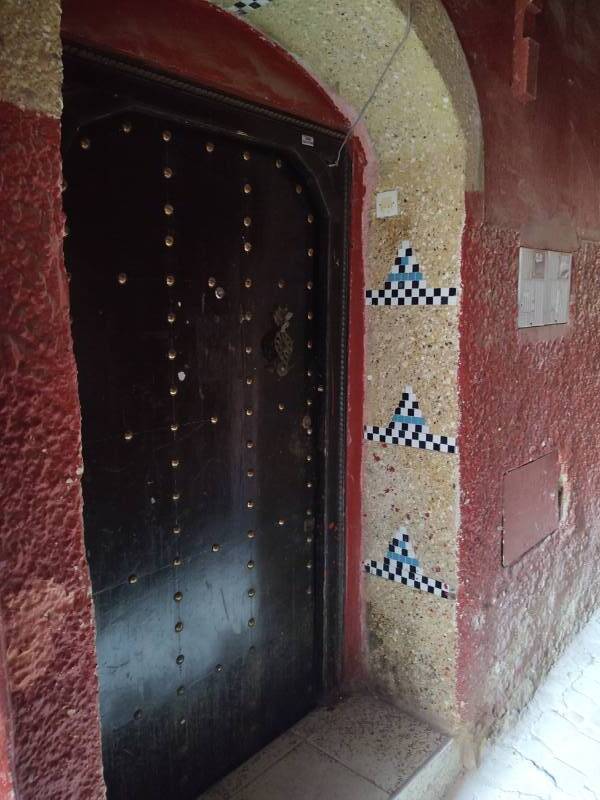
Very little was visible outside. Once inside you stepped through an entry hall and into the central courtyard.
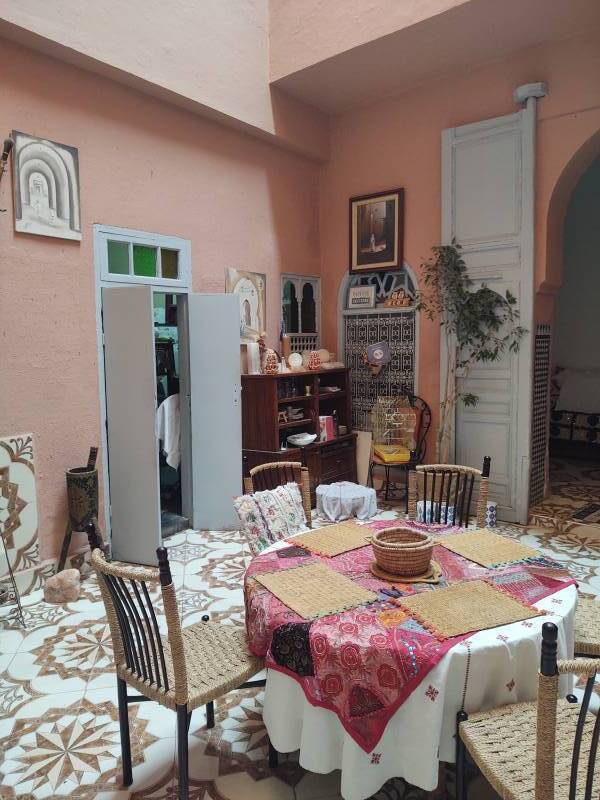
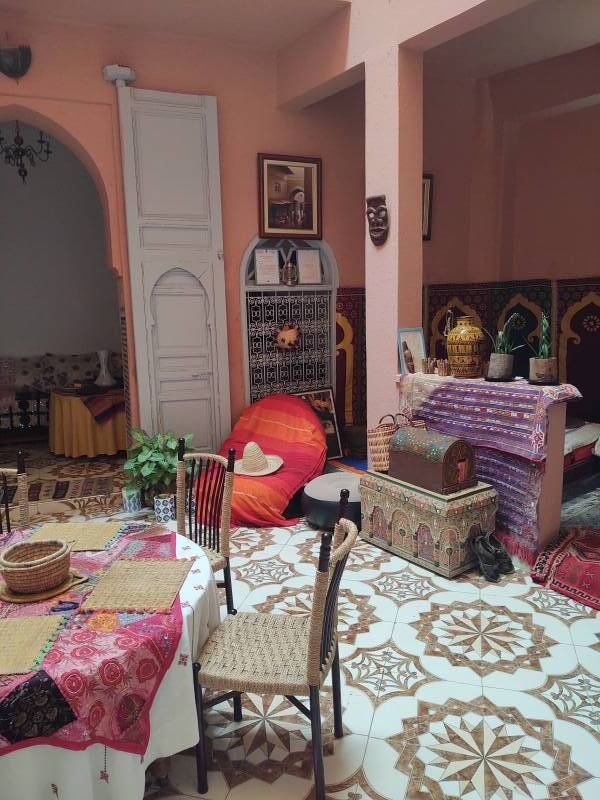

The guestrooms are above, along a passageway that goes around the courtyard.
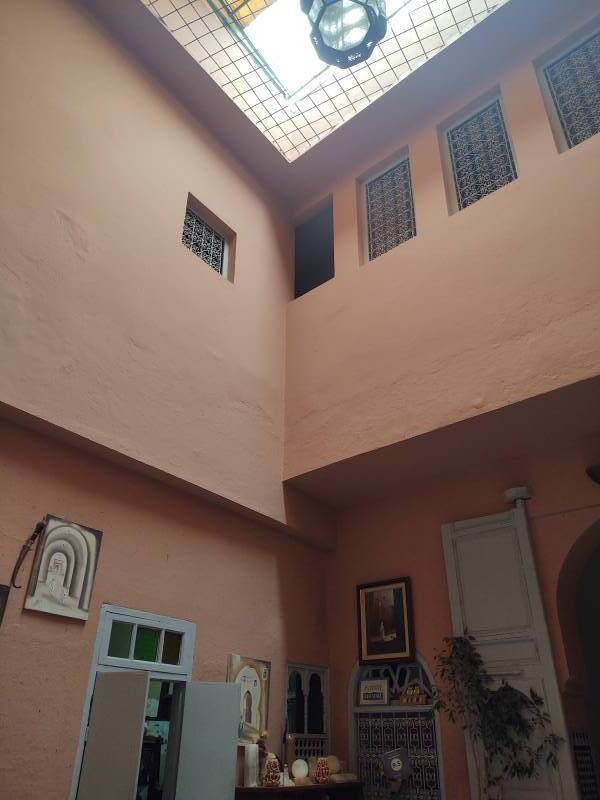
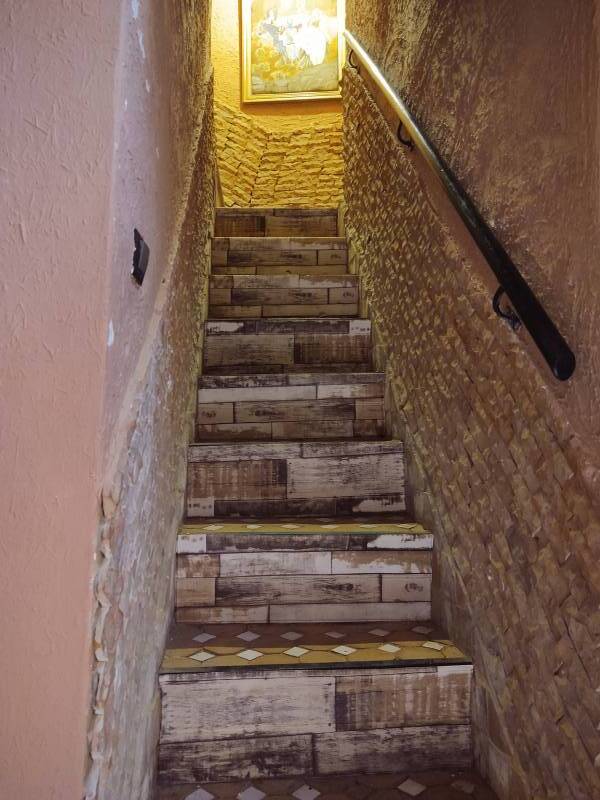
A second set of stairs leads up to a rooftop terrace.
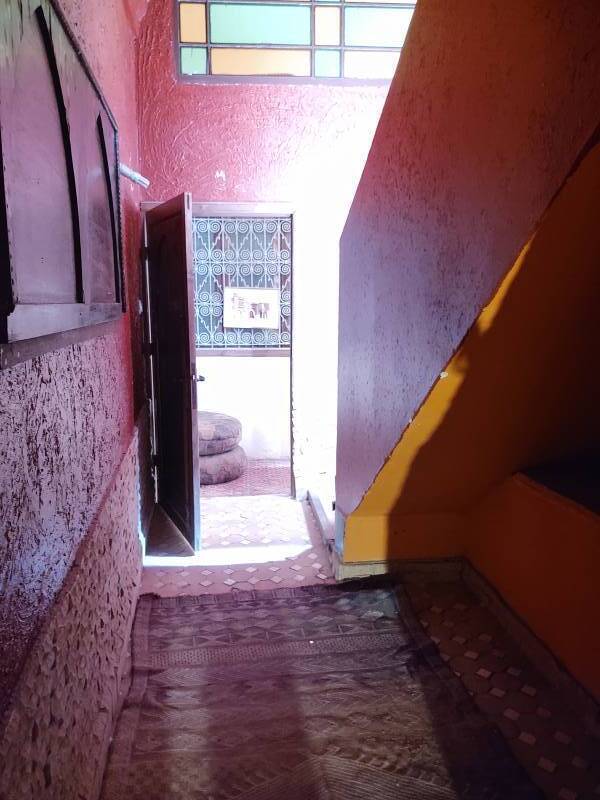
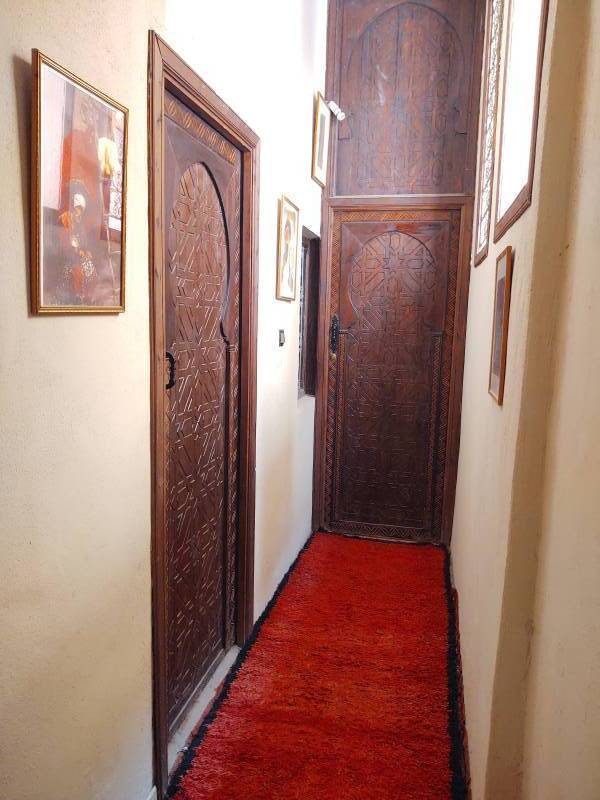
My room was at the end of the passage. I noticed so much art, prints of paintings and drawings and photographs in the guesthouses throughout Morocco.
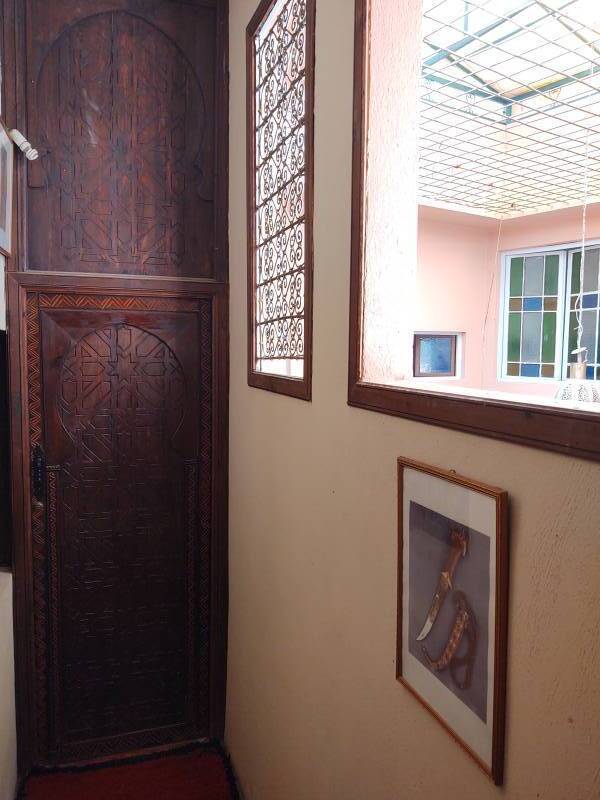
And finally, I reached my room.

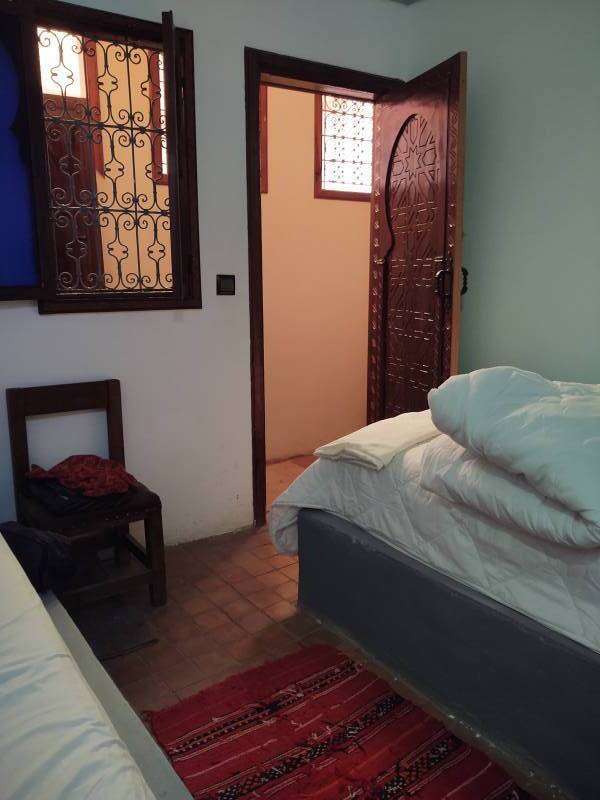
I had my own bathroom, with my own hot water heater.
The room was just about US$ 20 per night through booking.com. Like all the rest of my Moroccan lodging outside Casablanca, you can reserve on booking.com with a credit card in your currency but you pay in Dirhams when you arrive.
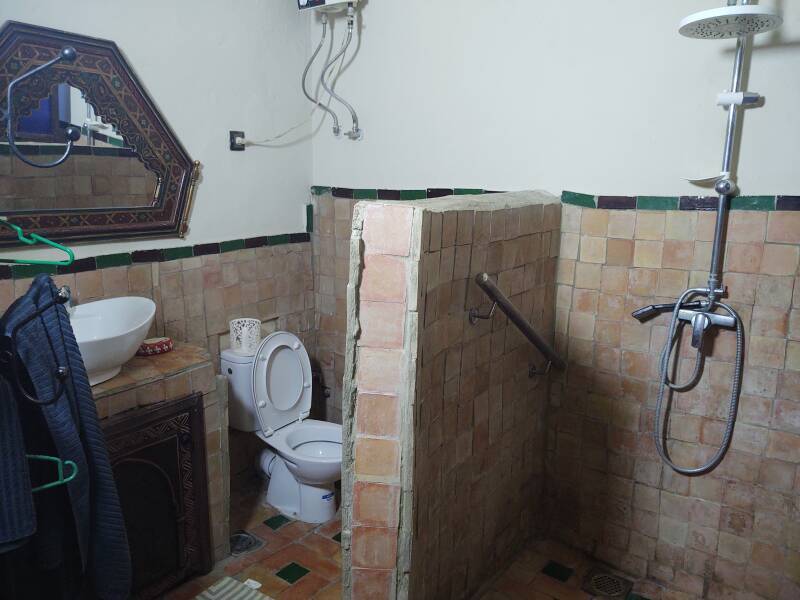
I got settled in, then went out to a café on Place el-Hedim to watch the people over a glass of mint tea.
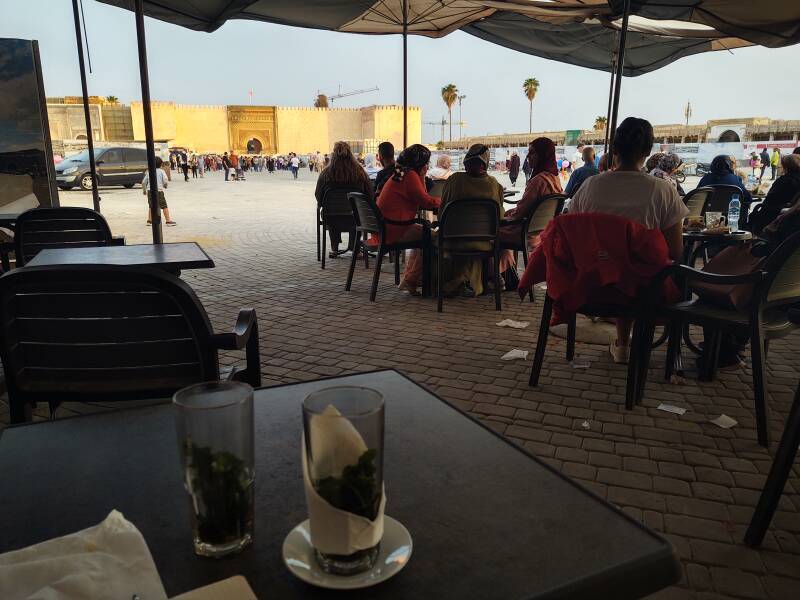
I could sit there and plan the next stage of my trip, a day trip to Volubilis.